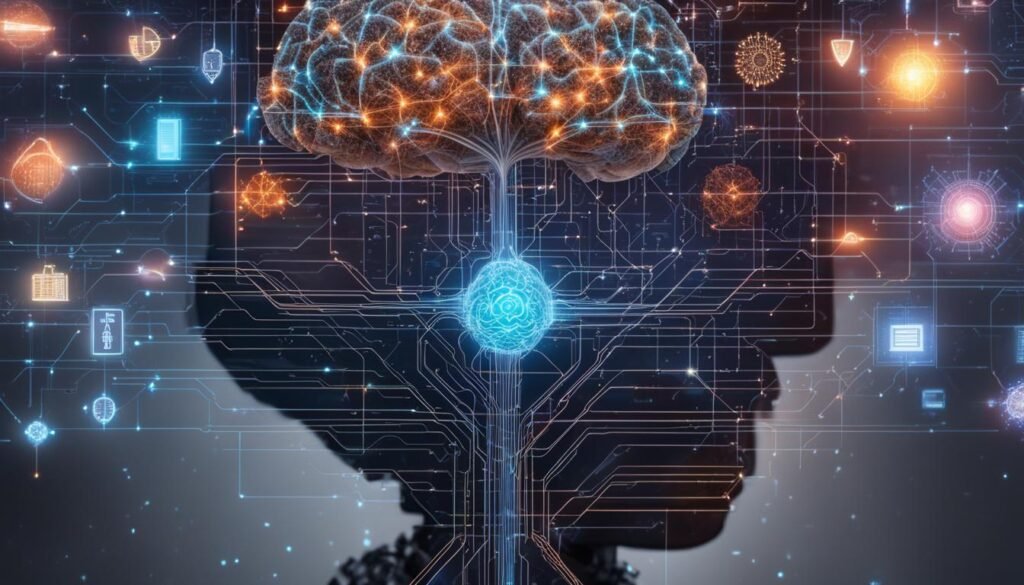
Master AI Programming Techniques: A Comprehensive Guide

AI programming techniques are essential for developers in the field of artificial intelligence. To effectively build AI systems and applications, developers need a strong understanding of various concepts and tools. This comprehensive guide covers the essential AI programming techniques, including machine learning algorithms, neural network models, deep learning frameworks, natural language processing libraries, data labeling techniques, model optimization methods, reinforcement learning algorithms, and AI programming languages.
Key Takeaways:
- AI programming techniques encompass a wide range of skills and methodologies
- Machine learning algorithms are vital for AI programming
- Neural network models improve AI system performance
- Deep learning frameworks streamline AI model development
- Natural language processing libraries enhance AI language understanding
Machine Learning Algorithms and Neural Network Models
Machine learning algorithms are the backbone of AI programming, enabling systems to learn and improve from experience without explicit programming. Understanding these algorithms is crucial for developers in the field of artificial intelligence. There are several types of machine learning algorithms, each serving a specific purpose. The most common types include:
- Supervised Learning Algorithms: These algorithms learn from labeled examples and are commonly used for tasks like image classification and speech recognition.
- Unsupervised Learning Algorithms: These algorithms learn patterns from unlabeled data and are used for tasks like clustering and dimensionality reduction.
- Reinforcement Learning Algorithms: These algorithms learn through trial and error, making them suitable for tasks involving decision-making and optimization.
Neural network models, on the other hand, are a key component of machine learning systems. Inspired by the structure of the human brain, neural networks are composed of interconnected nodes or "neurons." These networks are designed to recognize patterns and make predictions based on input data. Popular neural network models include feedforward networks, convolutional neural networks (CNNs), and recurrent neural networks (RNNs).
See Also... Discover the Efficiency of AI Coding Tools Today
Discover the Efficiency of AI Coding Tools Today"Machine learning algorithms are the building blocks of AI, allowing systems to learn and evolve. Neural network models, in particular, have revolutionized the field, enabling the development of image recognition systems, natural language processing applications, and much more." - AI Expert
Understanding machine learning algorithms and neural network models is essential for developers looking to harness the power of AI in their applications. These techniques form the foundation for creating intelligent systems that can analyze vast amounts of data and make accurate predictions. By utilizing the right algorithms and models, developers can unlock the true potential of artificial intelligence.
| Machine Learning Algorithm | Use Case |
|---|---|
| Support Vector Machines (SVM) | Text classification |
| Random Forest | Ensemble learning |
| Naive Bayes | Email spam detection |
Deep Learning Frameworks and Natural Language Processing Libraries
Deep learning frameworks are essential tools for developers working in the field of artificial intelligence. These frameworks offer a range of libraries and resources that simplify the process of building and training deep neural networks. With their high-level APIs and pre-built functions, developers can streamline tasks such as data preprocessing, model architecture design, and optimization.
See Also... Mastering Artificial Intelligence Programming: Your Guide to Success
Mastering Artificial Intelligence Programming: Your Guide to SuccessOne of the most popular deep learning frameworks is TensorFlow. Developed by Google, TensorFlow provides a wide variety of tools and resources for creating and training deep learning models. Its flexibility and scalability make it a go-to choice for researchers and practitioners alike. Another widely-used framework is PyTorch, known for its dynamic computation graph and intuitive coding style. PyTorch's user-friendly interface and efficient GPU utilization make it a preferred framework for many developers.
When it comes to natural language processing (NLP), libraries play a vital role in analyzing and processing textual data. Natural language processing libraries provide developers with pre-trained models and algorithms specifically designed for tasks such as sentiment analysis, named entity recognition, and language translation. One notable NLP library is NLTK (Natural Language Toolkit), which offers a wide range of tools and resources for text processing and analysis.
By leveraging deep learning frameworks like TensorFlow and PyTorch, and utilizing natural language processing libraries such as NLTK, developers can unlock the full potential of AI programming. These tools empower developers to work on cutting-edge AI applications and explore new possibilities in the field of artificial intelligence.
See Also... Meet the AI Film Cast and Crew: A Revolutionary Production
Meet the AI Film Cast and Crew: A Revolutionary ProductionFAQ
What are AI programming techniques?
AI programming techniques encompass a wide range of skills and methodologies that are vital for developers working in the field of artificial intelligence. These techniques include machine learning algorithms, neural network models, deep learning frameworks, natural language processing libraries, data labeling techniques, model optimization methods, reinforcement learning algorithms, and AI programming languages.
What is the role of machine learning algorithms in AI programming?
Machine learning algorithms play a crucial role in AI programming by allowing systems to automatically learn and improve from experience without being explicitly programmed. They include supervised learning, unsupervised learning, and reinforcement learning algorithms, which can be used for tasks such as image classification, speech recognition, clustering, dimensionality reduction, decision-making, and optimization.
How do deep learning frameworks contribute to AI programming?
Deep learning frameworks provide developers with the tools and libraries necessary to build and train deep neural networks. These frameworks, such as TensorFlow, PyTorch, and Keras, streamline the process of developing AI models by offering high-level APIs and pre-built functions for tasks like data preprocessing, model architecture design, and optimization. They are widely used in both research and industry for a wide range of AI applications.
Source Links
- https://www.wired.com/story/bike-security-bolts-finally-gave-me-peace-of-mind/
- https://www.pcmag.com/news/amazon-wants-businesses-to-ditch-id-cards-and-install-palm-scanners
- https://www.mdpi.com/2308-3417/8/6/115
If you want to know other articles similar to Master AI Programming Techniques: A Comprehensive Guide you can visit the Blog category.
Leave a Reply






Related Post...